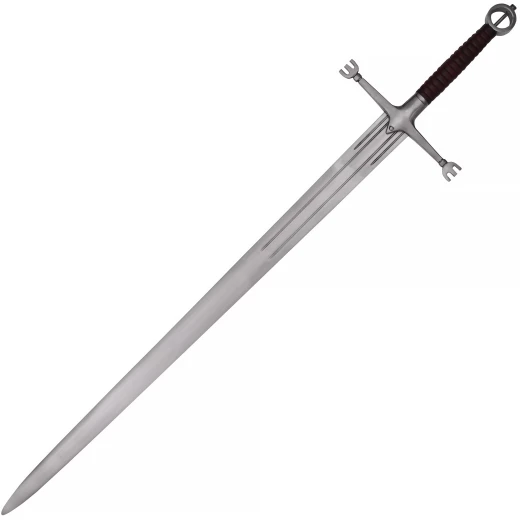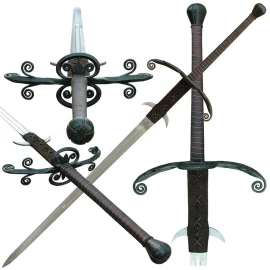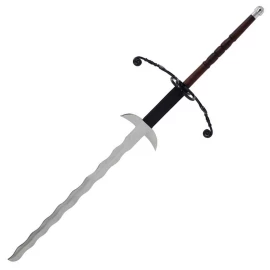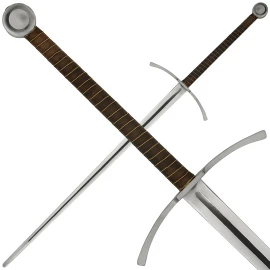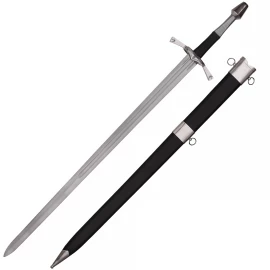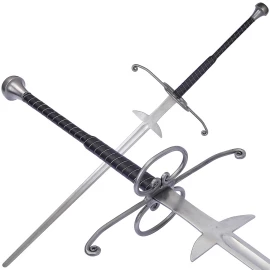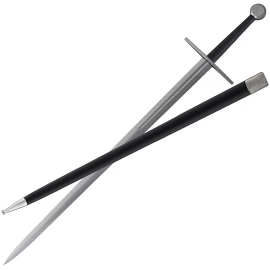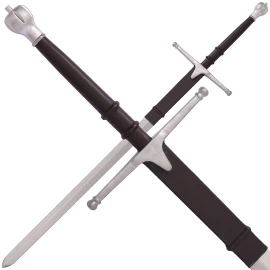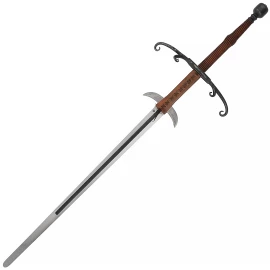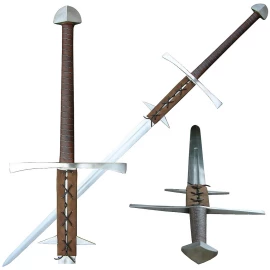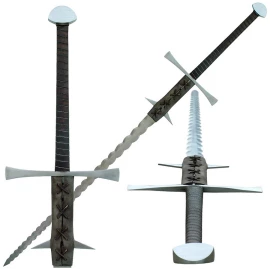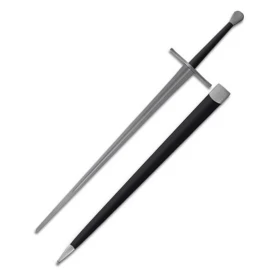Gallowglass Sword without Scabbard
This two-handed sword is patterned after the massive swords carried by the elite Irish mercenaries of Scottish descent known as gallowglass (also galloglass or galloglas - an anglicization of the Gaelic gallóglaigh / gallóglach that translates literally as "young, foreign soldier"). Between the mid-13th and late 16th c., these fearless, heavily armoured infantrymen fought alongside the kerns, the light infantry who made up the bulk of the Irish forces in the late Middle Ages and Renaissance. Further product information ...
Would you like to be notified as soon as the item is in stock?
You will receive a short e-mail as soon as we have it back in stock.
Gallowglass Sword without Scabbard
The gallowglass originally hailed from the Norse-Gaelic clans of the Scottish Highlands, Argyll and the Hebrides (off the west coast of Scotland), whose Irish ancestors had intermarried with the 10th c. Norse settlers. Dispossessed during the Wars of Scottish Independence, they fled to Ireland, where the Irish chieftains quickly recognized their worth and granted them work, land to settle and rights to supplies in return for their allegiance and military services. Many Irish lords would also often employ gallowglasses to serve as bodyguards. Over the centuries, the gallowglass ranks eventually filled with native Irishmen and "newer" Scottish mercenaries.
The weapons of choice of the highly skilled gallowglass troops were a two-handed sparth axe (presumably a remnant of their Scandinavian heritage) and a large two-handed sword. The sword quite often featured a distinctive ring-shaped pommel that showed the end of the blade tang running through its centre. This unique open ring pommel was fairly typical of the 15th and 16th c. Irish swords. Many surviving Irish-Gaelic ring-hilted originals have been found on archaeological digs all over Ireland and can nowadays be admired at various museums (i.e. the National Museum of Ireland in Dublin).
Our good value Gallowglass sword reconstruction has a broad, flat, double-edged EN45 spring steel blade with an approx. 15cm long ricasso section at its base and two sets of twin fullers on both sides (two running about one third down its length and two shorter ones). The edges are not sharpened. The hilt has an approx. 30cm long crossguard with approx. 7mm thick, E-shaped finials, a wooden grip tightly bound in brown leather, and features the iconic ring pommel that graces many an Irish sword.
This fine piece of Scottish and Irish history comes without a scabbard.
Please note that this late medieval / Renaissance two-handed sword is not a battle ready weapon. It is designed as a collector's or decoration/display piece and is not suited for combat reenactment. Besides its quality as a collectible, it is also perfectly suited as a prop, e.g. to complete your costume, and will make your transformation into a proud Irish warrior just perfect.
Specifications:
- Material: EN45 spring steel blade (high carbon steel, not stainless), leather-covered wooden grip, steel guard and pommel
- Overall length: approx. 138cm
- Blade length: approx. 106cm
- Blade thickness: approx. 4mm (cutting edges approx. 1mm)
- Hilt length: approx. 32cm (grip approx. 19cm)
- Max. blade width: approx. 6.5cm
- Point of balance: approx. 20cm from the guard
- Measurements of ring pommel: approx. 5.7cm Ø, 8mm thick
- Weight: approx. 2.8 kg
Specs may slightly vary from piece to piece.
The steel used here is not rust-proof and might show slight surface tarnishing in places. We recommend you to maintain the blade on a regular basis, for example using Ballistol Universal Oil, which is ideally suited for steel care.
We are here for you!


